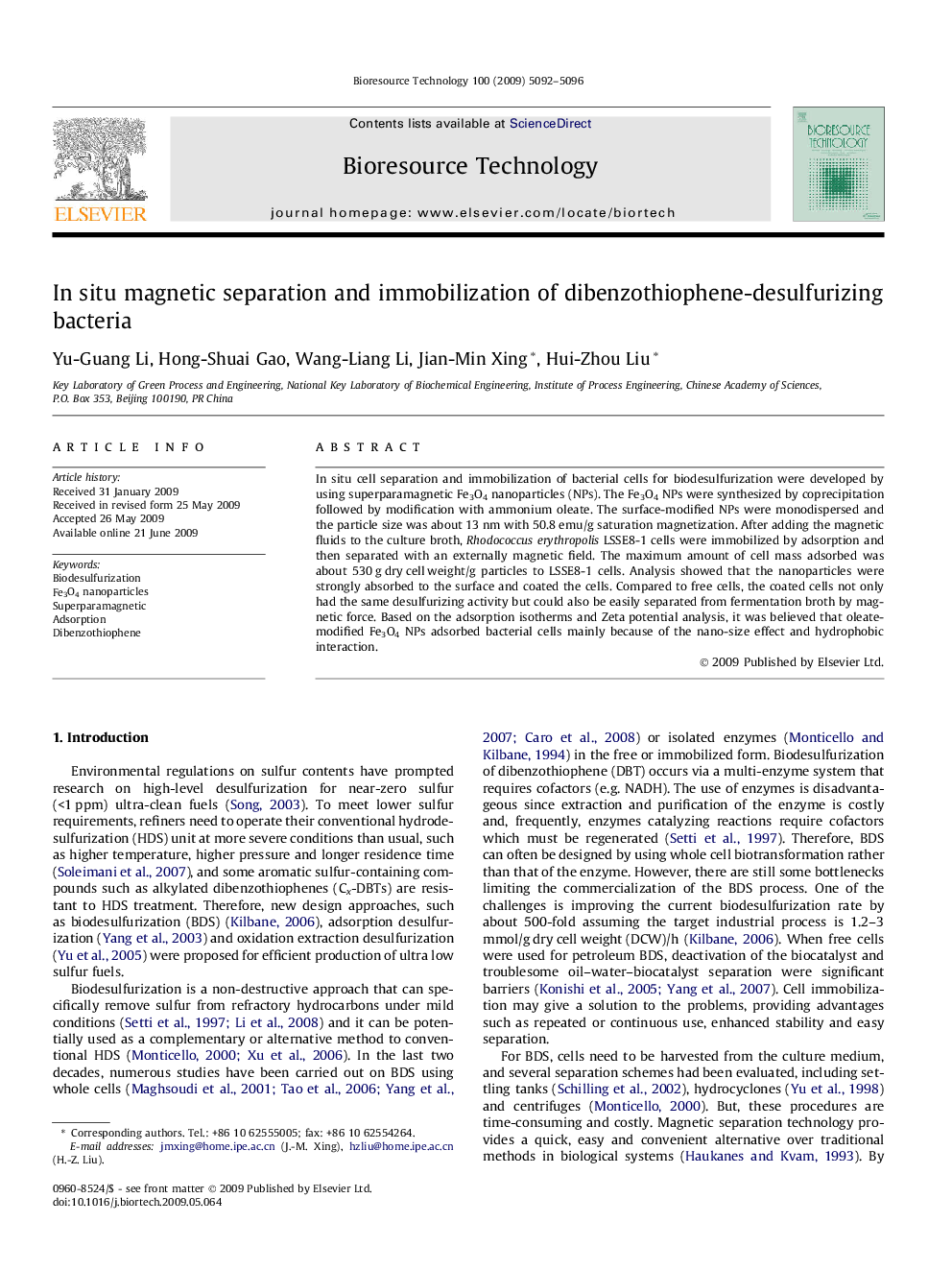| Article ID | Journal | Published Year | Pages | File Type |
|---|---|---|---|---|
| 684461 | Bioresource Technology | 2009 | 5 Pages |
Abstract
In situ cell separation and immobilization of bacterial cells for biodesulfurization were developed by using superparamagnetic Fe3O4 nanoparticles (NPs). The Fe3O4 NPs were synthesized by coprecipitation followed by modification with ammonium oleate. The surface-modified NPs were monodispersed and the particle size was about 13 nm with 50.8 emu/g saturation magnetization. After adding the magnetic fluids to the culture broth, Rhodococcus erythropolis LSSE8-1 cells were immobilized by adsorption and then separated with an externally magnetic field. The maximum amount of cell mass adsorbed was about 530 g dry cell weight/g particles to LSSE8-1 cells. Analysis showed that the nanoparticles were strongly absorbed to the surface and coated the cells. Compared to free cells, the coated cells not only had the same desulfurizing activity but could also be easily separated from fermentation broth by magnetic force. Based on the adsorption isotherms and Zeta potential analysis, it was believed that oleate-modified Fe3O4 NPs adsorbed bacterial cells mainly because of the nano-size effect and hydrophobic interaction.
Related Topics
Physical Sciences and Engineering
Chemical Engineering
Process Chemistry and Technology
Authors
Yu-Guang Li, Hong-Shuai Gao, Wang-Liang Li, Jian-Min Xing, Hui-Zhou Liu,
